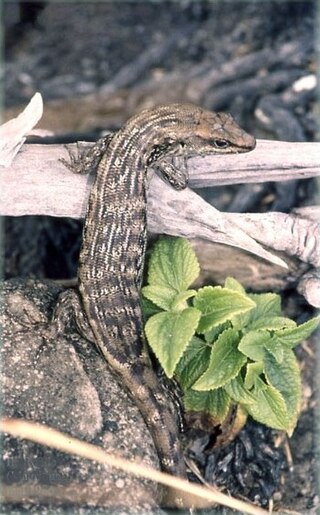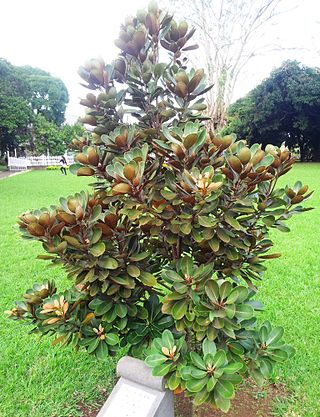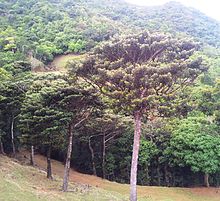
The Mascarene Islands or Mascarenes or Mascarenhas Archipelago is a group of islands in the Indian Ocean east of Madagascar consisting of the islands belonging to the Republic of Mauritius as well as the French department of La Réunion. Their name derives from the Portuguese navigator Pedro Mascarenhas, who first visited them in April 1512. The islands share a common geologic origin in the volcanism of the Réunion hotspot beneath the Mascarene Plateau and form a distinct ecoregion with a unique flora and fauna.

The Sapotaceae are a family of flowering plants belonging to the order Ericales. The family includes about 800 species of evergreen trees and shrubs in around 65 genera. Their distribution is pantropical.

Manilkara is a genus of trees in the family Sapotaceae. They are widespread in tropical and semitropical locations, in Africa, Madagascar, Asia, Australia, and Latin America, as well as various islands in the Pacific and in the Caribbean. A close relative is the genus Pouteria.

Wenceslas Bojer was a Czech naturalist, botanist and botanical illustrator. The standard author abbreviation Bojer is used to indicate this person as the author when citing a botanical name.

Sideroxylon is a genus of trees in the family Sapotaceae described as a genus by Linnaeus in 1753. They are collectively known as bully trees. The generic name is derived from the Greek words σιδηρος (sideros), meaning "iron", and ξύλον (xylon), meaning "wood."

Dombeya is a flowering plant genus. Traditionally included in the family Sterculiaceae, it is included in the expanded Malvaceae in the APG and most subsequent systematics. These plants are known by a number of vernacular names which sometimes, misleadingly, allude to the superficial similarity of flowering Dombeya to pears or hydrangeas. Therefore, the genus as a whole is often simply called dombeyas. The generic name commemorates Joseph Dombey (1742–1794), a French botanist and explorer in South America, involved in the notorious "Dombey affair", embroiling scientists and governments of France, Spain, and Britain for more than two years.

Mimusops is a genus of plants in the family Sapotaceae described as a genus by Linnaeus in 1753.

Poupartia is a genus of plant in family Anacardiaceae. From the islands of Madagascar, Mauritius, Rodrigues and Réunion, all in the Indian Ocean.

Vitellariopsis is a group of plants in the family Sapotaceae described as a genus in 1915. The genus is native to eastern and southern Africa.
- Vitellariopsis cuneata(Engl.) Aubrév. - Usambara Mts in Tanzania
- Vitellariopsis dispar(N.E.Br.) Aubrév. - Eswatini, KwaZulu-Natal
- Vitellariopsis ferrugineaKupicha - Zimbabwe
- Vitellariopsis kirkii(Baker) Dubard - Nampula, Tanzania, Kenya
- Vitellariopsis marginata(N.E.Br.) Aubrév. - Mozambique, Eswatini, South Africa

The Sapotoideae are a subfamily of the flowering plant family Sapotaceae. Plants in the subfamily are characterized by their leather-like leaves, often growing in a stipule fashion.

Charles Edward Telfair was an Irish botanist.
Arnottia is a genus of flowering plants from the orchid family, Orchidaceae. It is known only from Mauritius and Réunion Islands in the Indian Ocean. Four species are recognized :

Labourdonnaisia calophylloides is a species of plant in the family Sapotaceae native to the islands of Mauritius and Réunion in the Indian Ocean.

Englerophytum is a group of trees in the family Sapotaceae described as a genus in 1914.

Faucherea is a group of trees in the family Sapotaceae described as a genus in 1920.

Labramia is a genus of plants in the family Sapotaceae described as a genus in 1844. De Candolle initially named the genus Delastrea, which is a homonym for an older fungus name by Tulasne, so De Candolle changed the name to Labramia in the appendix to the same book.

Sideroxylon puberulum, or manglier rouge, is a species of plant in the family Sapotaceae. It is endemic to Mauritius.
André Aubréville was a French botanist, professor at the National Museum of Natural History in Paris and a member of the Academy of Sciences. He was the first scientist to introduce the term "desertification" (in his 1949 book: Climats, forêts et désertification de l'Afrique tropicale, and wrote a number of floras of former French colonies.
Donella is a genus of flowering plants belonging to the family Sapotaceae.
Gambeya is a genus of flowering plants belonging to the family Sapotaceae.
















